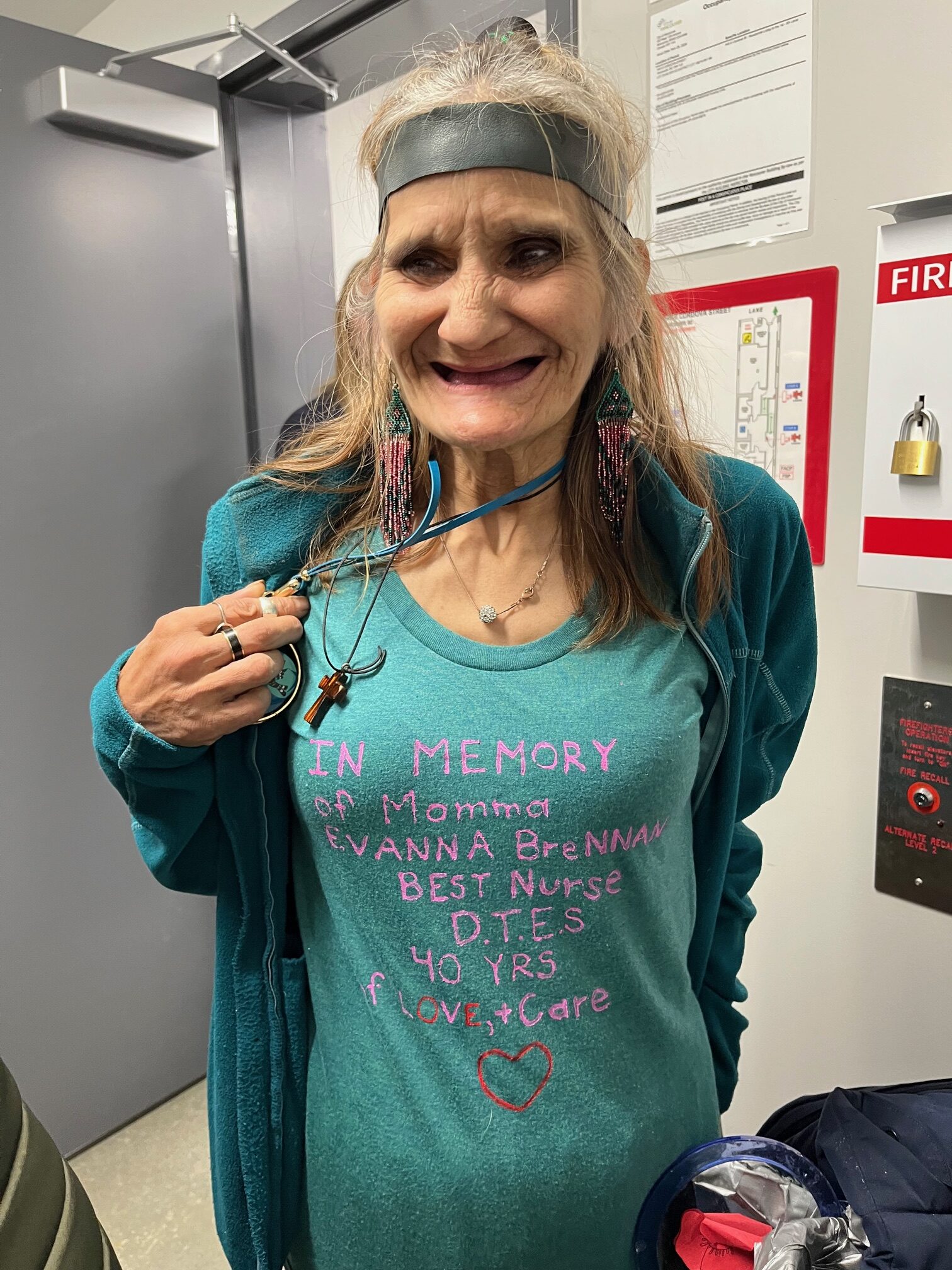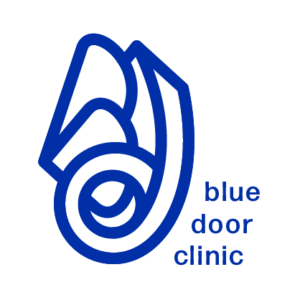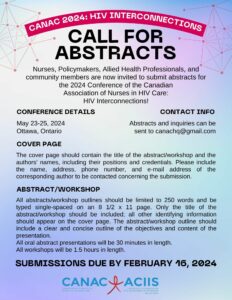
News
-
January 22, 2025
Honouring a Canadian leader in HIV/AIDS Care – Evanna Brennan
“Susan and Evanna were the dynamic duo, working in the downtown eastside to provide care to the community’s most vulnerable individuals while pioneering harm reduction for patients in their care. They insisted on bringing healthcare to where it was needed most – in the shelters and single room occupancy hotels where their patients lived.”
CANAC is honoured to have shared Evanna’s contribution to street nursing and HIV care. We have provided photos from the opening of the supportive housing project named in her honour and links to the Angels on Call film below.
- Event attendees and CANAC members attending the event: (from left to right) Dr. Vera Caine, Susan GIles, Dr. Jane McCall and Irene Goldstone
- Susan Giles accepting flowers on Evanna’s alongside Woody (far right) Evanna’s husband
Angels on Call
Street nurses Evanna Brennan, 75, and Susan Giles, 68, have foregone retirement to provide full-time care to the desperately ill, homeless, alcoholic and drug-addicted residents of Vancouver’s poverty-stricken Downtown Eastside. Directed and produced by Roberta Staley. Co-directed and co-produced by Tallulah. Funded by Telus StoryHive.
-
January 22, 2025
JANAC Call for Papers
CANAC is excited to share the call for a special JANAC issue.
The attached call for papers on Ethical, Social and Political Issues in HIV Prevention, Care and Treatment may align with many of the ongoing advocacy, care, and research of our members!
Please review the attached document for more information.
This is also a great reminder that all CANAC members have access to the Journal of the Association of Nurses in HIV/AIDS Care. If you have any issues accessing the journal, please reach out to info@canac.org
-
March 4, 2024
A conversation between Dr. Theresa Tam and Jade Elektra
CANAC is excited to share an interview led by a Public Health Agency of Canada (PHAC) team, including Sophia Neumann and Jessica Helwig, on their awareness campaign on the Undectectable=Untransmisible (U=U) initiative.
A conversation between Dr. Theresa Tam and Jade Elektra
Undetectable = Untransmittable (U=U) refers to the scientific consensus that HIV cannot be sexually transmitted when a person living with HIV consistently takes antiretroviral therapy (ART) and the amount of HIV in their blood remains very low—so low that it cannot be detected by many standard HIV tests.
While the U=U message empowers people living with HIV and reduces stigma associated with the virus, it is only effective if individuals living with HIV are able to continuously take their medication. Many people in Canada, such as African, Caribbean and Black communities, Indigenous Peoples, gay, bisexual, and other men who have sex with men, people who use drugs, and incarcerated people, face social and structural barriers that can impact access to HIV care and make it difficult to maintain consistent access to treatment. In order for U=U to have the greatest impact, people living with HIV must be supported by promoting U=U, advocating for those who face barriers in medication adherence, and facilitating access to care. All public health and health professionals can help normalize and share the U=U message.
Dr. Theresa Tam, Canada’s Chief Public Health Officer, had a discussion with Jade Elektra, HIV Activist, drag performer, recording artist, and community builder about the social and structural nuances of U=U.
Dr. Theresa Tam: Jade, it’s a pleasure speaking with you about U=U. You’ve done so much to create safe spaces and address HIV-related stigma. The magazine you’ve founded by and for people living with HIV is just one example. I’m looking forward to delving into this topic with you.
Jade Elektra: Thank you, Dr. Tam. I’m always happy to talk about U=U—it’s a topic close to my heart and one that needs more attention.
Jade Elektra: U=U can have a tremendous impact on a person living with HIV, especially if they are sexually active, and can be empowering for young people and recently diagnosed folks living with HIV. However, I’d be interested in hearing your perspective as a public health leader on why U=U is so important.
Dr. Theresa Tam: Looking back, it’s amazing to see how far treatment and care for HIV has come in the past 45 years. Thanks to scientific advances, HIV has become a treatable chronic condition. Don’t get me wrong, we still have a ways to go, but now people with HIV are living longer and healthier lives than before. People living with HIV who are aware of U=U are more likely to report better mental, physical and sexual health. This science has transformed what it means to live and love with HIV on a global scale.
However, we also need to address the stigma and discrimination experienced by people living with HIV, both socially and within healthcare settings. It can really affect people’s wellbeing, including their willingness to seek out testing and treatment.
Jade Elektra: Yes, there are many barriers that could contribute to not achieving an undetectable status.
Dr. Theresa Tam: In 2020, close to 17,000 people in Canada did not achieve viral suppression. Because they lacked access to effective HIV treatment options or didn’t take any treatments, they were still at risk of transmitting HIV. The U=U message is important because it reduces HIV-associated stigma and encourages people to access testing and treatment needed to reach an undetectable status. As much as there is still work to be done, Canada has made great strides and has already reached one of the UNAIDS interim HIV treatment targets for the year 2025 of ensuring 95% of people with HIV who are on treatment have a suppressed viral load.
Dr. Theresa Tam: We know that there are barriers to becoming undetectable. Jade, could you share your views on what might prevent someone from achieving “undetectable” status?
Jade Elektra: Yes there are many possible contributing barriers such as, lack of education, racism, and limited access to healthcare facilities. African, Caribbean, and Black communities in particular experience higher rates of HIV, but these communities may also face more systemic and structural barriers preventing access to medication. Some people may have to choose between buying food, paying rent or getting their medication. Other folks may experience: intermittent access to treatment; multiple health problems at once; or precarious housing without a set routine. Any of these situations affects their ability to stick to a treatment plan. What’s more, people may be reluctant to continue seeking care if they experience racism in health care settings or cannot access culturally appropriate care. But I believe the stigma of being HIV+, or even being perceived as being HIV+, is the biggest hurdle.
Dr. Theresa Tam: Clearly there are complex and compounding systemic factors that may impact someone’s ability to consistently take medication or access testing and care to begin with.
Jade Elektra: Definitely – I went many years without any medical treatment and was extremely ashamed and felt afraid to let anyone know that I was HIV+. I believe that shame and fear actually made my health worse. But once I started the retro-viral meds and started watching my numbers get better I took pride in taking care of myself.
That said, not everyone who is living with HIV has access to medical treatment or an adherence routine due to the factors we’ve been talking about. The shame and fear these individuals may feel might be reinforced by general HIV-related stigma, not being able to reach viral suppression, or even specific health care related stigma. They may face discrimination and judgement by health professionals for not adhering to treatment or not getting support in leading full social and sexual lives. They may even be labelled as “non-compliant” in adhering to medication, which adds to the stigma, when in fact the barriers these individuals face are systemic and not a reflection of a personal failing.
Dr. Theresa Tam: For patients who face barriers to U=U, it is important for us, as health professionals, to recognize our own personal biases and avoid stigmatizing patients that aren’t adhering to medication. As health professionals, it is important we take a person-centered approach and provide support that meet patients’ needs.
Jade Elektra: I feel strongly that health professionals need to support patients living with HIV, especially those who face barriers to U=U. U=U should be a practiced, normalized conversation with patients and clients, and awareness of barriers should be well known. I have experienced healthcare settings where the provider is not promoting U=U or doesn’t know about it. What would you recommend health professionals do to support patients with HIV who face barriers to U=U?
Dr. Theresa Tam: Not just as health professionals, we need to normalize sexual health and sexual health conversations, including sexually transmitted and blood-borne infections to reduce stigma associated with HIV testing and treatment.
We can continue to support patients who face barriers to U=U by promoting the full range of effective, evidence-based prevention options for HIV and other sexually transmitted and blood-borne infections, like condoms, pre-exposure prophylaxis (PrEP), post-exposure prophylaxis (PEP), and harm reduction. We can connect patients with other health or social services, which may then help address the barriers our patients face to reaching undetectable. How do we encourage health professionals to champion U=U while also meeting patients where they are at?
Jade Elektra: I believe a bigger push to educate all health professionals, people living with HIV, and the general public at large about U=U could help close the gap. Pamphlets in waiting rooms and clinics and displaying posters in public areas is a great way to start the conversation. Now we can add the Public Health Agency of Canada’s recent public awareness campaign on U=U and its helpful resources such as the Communication Tips for Health Professionals factsheet. Another good source of information is CATIE—a community-based organization promoting good practices for prevention and treatment and they also have great HIV and U=U related materials available, free of charge. We need the information widely available in the public sphere.
Encouraging patients to ask questions is another great way to start the conversation and meet people where they are at. Health professionals can ask patients about their situation and the barriers they may face to learn how to best support their health needs. Always remember that each person has their own circumstances of why they can or cannot achieve a U=U status. It’s helpful to focus on what can be done to support patients within their unique circumstances.
Dr. Theresa Tam: Thank you, Jade, for taking the time to speak about U=U and openly sharing your thoughts and experiences. Our conversation today emphasizes that all health professionals, whether or not they work in sexual health or HIV specific fields, have the power to create positive change through initiating and promoting conversations about HIV, U=U, and safer sex. To learn more about U=U and to access resources for health professionals, please visit Canada.ca/HIV
Une conversation entre la Dre Theresa Tam et Jade Elektra
L’expression « indétectable = intransmissible » (I = I) fait référence au consensus scientifique selon lequel le VIH ne peut pas être transmis sexuellement lorsqu’une personne vivant avec celui-ci suit systématiquement un traitement antirétroviral (TAR) et que la quantité de VIH dans son sang demeure très faible – si faible qu’elle ne peut pas être détectée par de nombreux tests standard de dépistage.
Si le message I = I habilite les personnes vivant avec le VIH et réduit la stigmatisation associée au virus, il n’est efficace que si les personnes vivant avec le VIH sont en mesure de prendre leurs médicaments de manière continue. De nombreuses personnes au Canada, telles que les communautés africaines, caribéennes et noires, les peuples autochtones, les homosexuels, les bisexuels et les autres hommes ayant des rapports sexuels avec des hommes, les consommateurs de drogues et les personnes incarcérées, sont confrontées à des obstacles sociaux et structurels qui peuvent avoir une incidence sur l’accès aux soins liés au VIH et rendre difficile le maintien d’un accès cohérent au traitement. Pour que le programme I = I ait le plus grand impact possible, il faut soutenir les personnes vivant avec le VIH en promouvant le programme I = I, en défendant les personnes confrontées à des obstacles en matière d’observance thérapeutique et en facilitant l’accès aux soins. Tous les professionnels de la santé publique et de la santé peuvent contribuer à normaliser et à partager le message de l’accès universel.
La Dre Theresa Tam, administratrice en chef de la santé publique au Canada, a discuté avec Jade Elektra, militante de la lutte contre le VIH, artiste de drag et de studio et bâtisseuse de communauté, des nuances sociales et structurelles de I = I.
Dre Theresa Tam : Jade, c’est un plaisir de vous parler de I = I. Vous avez tant fait pour créer des espaces sûrs et lutter contre la stigmatisation liée au VIH. Le magazine que vous avez fondé par et pour les personnes vivant avec le VIH n’en est qu’un exemple. J’ai hâte d’approfondir ce sujet avec vous.
Jade Elektra : Merci, Dre Tam. Je suis toujours heureuse de parler de I = I – c’est un sujet qui me tient à cœur et qui a besoin de plus d’attention.
Jade Elektra : I = I peut avoir un impact considérable sur une personne vivant avec le VIH, en particulier si elle est sexuellement active, et peut donner du pouvoir aux jeunes et aux personnes récemment diagnostiquées comme vivant avec le VIH. Cependant, j’aimerais connaître votre point de vue en tant que responsable de la santé publique sur les raisons pour lesquelles I = I est si important.
Dre Theresa Tam : Avec le recul, il est étonnant de voir à quel point le traitement et la prise en charge du VIH ont progressé au cours des 45 dernières années. Grâce aux progrès scientifiques, le VIH est devenu une maladie chronique traitable. Ne vous méprenez pas, il reste encore du chemin à parcourir, mais aujourd’hui, les personnes séropositives vivent plus longtemps et en meilleure santé qu’auparavant. Les personnes vivant avec le VIH qui connaissent I = I sont plus susceptibles de faire état d’une meilleure santé mentale, physique et sexuelle. Cette science a transformé ce que signifie vivre et aimer avec le VIH à l’échelle mondiale.
Toutefois, nous devons également nous attaquer à la stigmatisation et à la discrimination dont sont victimes les personnes vivant avec le VIH, tant sur le plan social que dans les établissements de soins de santé. Cela peut réellement affecter le bien-être des personnes, y compris leur volonté de se faire dépister et traiter.
Jade Elektra : Oui, il existe de nombreux obstacles qui peuvent nuire à l’atteinte du statut indétectable.
Dre Theresa Tam : En 2020, près de 17 000 personnes au Canada n’ont pas atteint la suppression virale. Parce qu’elles n’ont pas eu accès à des traitements efficaces contre le VIH ou qu’elles n’ont pris aucun traitement, elles risquent toujours de transmettre le VIH. Le message I = I est important parce qu’il réduit la stigmatisation associée au VIH et encourage les gens à accéder aux tests et aux traitements nécessaires pour atteindre un statut indétectable. Même s’il reste du travail à faire, le Canada a fait de grands progrès et a déjà atteint l’un des objectifs intermédiaires de l’ONUSIDA en matière de traitement du VIH pour l’année 2025, à savoir garantir que 95 % des personnes séropositives qui suivent un traitement ont une charge virale supprimée.
Dre Theresa Tam : Nous savons qu’il existe des obstacles pour devenir indétectable. Jade, pourriez-vous nous faire part de votre point de vue sur ce qui pourrait empêcher quelqu’un d’atteindre le statut « indétectable »?
Jade Elektra : Oui, il existe de nombreux obstacles possibles, tels que le manque d’éducation, le racisme et l’accès limité aux établissements de santé. Les communautés africaines, caribéennes et noires en particulier connaissent des taux de VIH plus élevés, mais ces communautés peuvent également être confrontées à des obstacles plus systémiques et structurels empêchant l’accès aux médicaments. Certaines personnes doivent parfois choisir entre acheter de la nourriture, payer leur loyer ou obtenir leurs médicaments. D’autres personnes peuvent être confrontées à un accès intermittent au traitement, à des problèmes de santé multiples à la fois ou à un logement précaire sans routine fixe. Chacune de ces situations affecte leur capacité à suivre un plan de traitement. De plus, les personnes peuvent hésiter à continuer à se faire soigner si elles sont victimes de racisme dans les établissements de soins ou si elles n’ont pas accès à des soins adaptés à leur culture. Mais je pense que la stigmatisation liée au fait d’être séropositif, ou même d’être perçu comme tel, est le plus grand obstacle.
Dre Theresa Tam : Il est clair qu’il existe des facteurs systémiques complexes et cumulés qui peuvent avoir un impact sur la capacité d’une personne à prendre régulièrement ses médicaments ou à accéder aux tests et aux soins.
Jade Elektra : Absolument. J’ai passé de nombreuses années sans aucun traitement médical, j’avais extrêmement honte et j’avais peur de dire à qui que ce soit que j’étais séropositive. Je crois que cette honte et cette peur ont en fait aggravé mon état de santé. Mais une fois que j’ai commencé à prendre des médicaments antiviraux et que j’ai commencé à voir mes chiffres s’améliorer, j’ai été fière de prendre soin de moi.
Cela dit, toutes les personnes vivant avec le VIH n’ont pas accès à un traitement médical ou à une routine d’observance en raison des facteurs dont nous avons parlé. La honte et la peur que ces personnes peuvent ressentir peuvent être renforcées par la stigmatisation générale liée au VIH, l’incapacité à atteindre la suppression virale ou même la stigmatisation spécifique liée aux soins de santé. Elles peuvent être confrontées à la discrimination et au jugement des professionnels de la santé parce qu’elles ne suivent pas leur traitement ou ne sont pas aidées à mener une vie sociale et sexuelle épanouie. Elles peuvent même être qualifiées de « non-conformistes » dans l’observance de leur traitement, ce qui ajoute à la stigmatisation, alors que les obstacles auxquels ces personnes sont confrontées sont systémiques et ne sont pas le reflet d’une défaillance personnelle.
Dre Theresa Tam : Pour les patients qui se heurtent à des obstacles à I = I, il est important que nous, en tant que professionnels de la santé, reconnaissions nos propres préjugés et évitions de stigmatiser les patients qui ne respectent pas leur traitement. En tant que professionnels de la santé, il est important d’adopter une approche centrée sur la personne et de fournir un soutien qui réponde aux besoins des patients.
Jade Elektra : Je suis convaincue que les professionnels de la santé doivent soutenir les patients vivant avec le VIH, en particulier ceux qui se heurtent à des obstacles à l’accès à l’information. L’accès à l’information devrait être une pratique courante, une conversation normalisée avec les patients et les clients, et la connaissance des obstacles devrait être bien connue. J’ai connu des établissements de santé où le prestataire n’encourageait pas l’accès à l’information ou n’était pas au courant de son existence. Que recommanderiez-vous aux professionnels de la santé de faire pour aider les patients séropositifs qui se heurtent à des obstacles à l’accès à l’information?
Dre Theresa Tam : Pas seulement en tant que professionnels de la santé, nous devons normaliser la santé sexuelle et les conversations sur la santé sexuelle, y compris les infections sexuellement transmissibles et les infections transmises par le sang, afin de réduire la stigmatisation associée au dépistage et au traitement du VIH.
Nous pouvons continuer à soutenir les patients qui se heurtent à des obstacles à I = I en promouvant l’ensemble des options de prévention efficaces et fondées sur des données probantes pour le VIH et d’autres infections sexuellement transmissibles et transmissibles par le sang, comme les préservatifs, la prophylaxie pré-exposition (PrEP), la prophylaxie post-exposition (PPE) et la réduction des risques. Nous pouvons mettre les patients en contact avec d’autres services sociaux ou de santé, qui peuvent alors les aider à surmonter les obstacles auxquels ils se heurtent pour devenir indétectables. Comment encourager les professionnels de la santé à défendre l’approche I = I tout en rencontrant les patients là où ils en sont?
Jade Elektra : Je pense qu’un effort plus important pour éduquer tous les professionnels de la santé, les personnes vivant avec le VIH et le grand public au sujet de I = I pourrait aider à combler le fossé. Des brochures dans les salles d’attente et les cliniques et des affiches dans les lieux publics sont un excellent moyen d’entamer la conversation. Nous pouvons maintenant ajouter la récente campagne de sensibilisation de l’Agence de santé publique du Canada sur le thème de l’obligation d’uriner et ses ressources utiles telles que la fiche d’information sur les Conseils de communication pour les professionnels de la santé. Une autre bonne source d’information est CATIE, une organisation communautaire qui promeut les bonnes pratiques en matière de prévention et de traitement, et qui met gratuitement à disposition d’excellents documents sur le VIH et I = I. L’information doit être largement diffusée dans la sphère publique.
Encourager les patients à poser des questions est un autre excellent moyen d’entamer la conversation et de rencontrer les gens là où ils en sont. Les professionnels de la santé peuvent interroger les patients sur leur situation et les obstacles qu’ils peuvent rencontrer afin d’apprendre comment répondre au mieux à leurs besoins en matière de santé. N’oubliez jamais que chaque personne a ses propres circonstances qui expliquent pourquoi elle peut ou ne peut pas atteindre le statut I = I. Il est utile de se concentrer sur ce qui est le plus important pour elle. Il est utile de se concentrer sur ce qui peut être fait pour soutenir les patients dans leur situation particulière.
Dre Theresa Tam : Merci, Jade, d’avoir pris le temps de parler de I = I et d’avoir partagé ouvertement vos pensées et vos expériences. Notre conversation d’aujourd’hui souligne que tous les professionnels de la santé, qu’ils travaillent ou non dans le domaine de la santé sexuelle ou du VIH, ont le pouvoir de créer un changement positif en lançant et en promouvant des conversations sur le VIH, I = I et le sexe à moindre risque.
Pour en savoir plus sur I = I et accéder aux ressources destinées aux professionnels de la santé, veuillez consulter le site Canada.ca/VIH.
-
January 16, 2024
Blue Door Clinic – Nurse Practitioner Position
The job posting for the Blue Door Clinic Nurse Practitioner position is now live on the Casey House website: https://caseyhouse-external.scouterecruit.net/jobs/CSH111-nurse-practitioner-blue-door-clinic
This posting will close at 11:59 PM on Sunday, January 28, 2024.
Folks are welcome to contact Sarah Ionson – the Nurse Coordinator at the Blue Door Clinic, directly with any questions about the role. Sarah’s email: sionson@caseyhouse.ca
-
December 8, 2023
Call for Abstracts – CANAC Conference 2024
Call for Abstracts is now open until February 16, 2024!
Please send any questions or inquiries to canachq@gmail.com
-
August 28, 2023
Vancouver Coastal Health is hiring an HIV/AIDS Outreach Nurse
Vancouver Coastal Health is looking for a Nurse to join the team at Three Bridges Community Health Centre with the STOP HIV/AIDS Initiatives. Apply today to join our team!
As a HIV/AIDS Outreach Nurse with Vancouver Coastal Health, you will:
- Work as part of a multidisciplinary team to provide outreach services to vulnerable/marginalized clients and communities who are at high risk for HIV/AIDS.
- Provide frontline primary health care services to clients in the form of immediate assessment, intervention and treatment.
- Provide pre- and post-test counseling for the HIV antibody test, test results, and ongoing support and referral to meet the physical and psychosocial needs of HIV/AIDS clients.
- Provide harm reduction education, counseling and support from a nursing perspective on issues relating to Sexually Transmitted Infections (STI) and HIV in non-traditional settings such as gay bars, drop-ins, on the street and other meeting places.
- Distribute harm reduction supplies.
- Collaborate with other community-based agencies to reach populations at high risk for acquiring STDs and HIV.
- Liaise with community-based AIDS organizations or other organizations to plan, develop, implement and deliver preventive HIV/AIDS educational material workshops and programs to targeted groups.
- Identify the health issues, behaviours, needs, barriers and challenges for at-risk populations.
- Work collaboratively in team settings to develop creative strategies to address the challenges and participates in research projects, and surveys as required.
View the full posting here: HIV/AIDS Outreach Nurse
-
November 29, 2021
World AIDS Day 2021 – Remember. Reflect. Renew.
On this World AIDS Day, I ask you to take time to remember, reflect, and renew your commitment to the important work you do as a nurse or healthcare provider. Each year World AIDS Day gives us an opportunity to remember those we have lost to HIV disease and other pandemics. It also allows us to remember why we do the work we do. This day gives us an opportunity to reflect on the lives we have changed and will change as well as how we can continue engage in self-care that allows us to do the work we do. World AIDS Day also gives us an opportunity to renew our commitment to ourselves and those we serve. This period of renewal aligns with the approach of the winter season which in many Indigenous cultures is a time for renewal and rejuvenation. It is the season when much of Canada and the northern hemisphere enter the slumber that renews life that manifests prominently during spring. This year we are at an inflection point with the SARS CoV-2 (COVID-19) pandemic when we are seeing progress while navigating hurdles that continue to lay bare social and political upheavals, we must navigate to weather the transition from a pandemic to an endemic state where we live with SARS CoV-2. As we move forward, it is important for us to heed the concern expressed in the UNAIDS theme for World AIDS Day 2021, “End inequalities. End AIDS. End pandemics.” As we strive to achieve these goals, remembering, reflecting, and renewing our commitments will help us achieve the goals espoused in this theme that are grounded in human rights-based approaches to caring for ourselves and our communities.
In humility and respect,
J. Craig Phillips, LLM, PhD, RN, ACRN, FAAN, FCAN
CANAC President -
March 26, 2021
CANAC’s 29th Conference – Registration is now open!
CANAC’s 29th Conference will be held virtually from May 14th to 16th, 2021 from the comfort, and familiarity, of your computer chair!
To register for the conference, please click here!
For further information, please visit our conference webpage to the left.
-
December 1, 2020
World AIDS Day 2020 – Global Solidarity, Shared Responsibility
The theme for the 2020 Worlds AIDS Day is Global Solidarity, Shared Responsibility. It is an important focus given that the need for global solidarity has never been greater. While significant advances in an effort to end HIV have been lost due to the impact of the COVID19 pandemic, particularly for women and girls, now is the time to imagine a different world. As we seek solidarity it is important that we challenge colonial systems and their power structure and to advocate for freedom and plurality, as foundational to solidarity. Over the past few months, we have seen that the actions of politicians create greater inequities and reinforce differences both locally and globally. It is now that we must demand that we make different choices. Choices about how we want to live together, choices that will allow us to have a world that is marked by global solidarity and shared responsibilities. There is a great need to challenge, to raise questions, and to demand how we build a world in which we emphasize democracy, human rights, and equity. The call for shared responsibility demands that we engage in thinking that has ethical and political implications. This is the time that we need to call forth the knowledge we have gained in the context of the HIV movement. Solidary is a necessity and shared responsibility only one small step of addressing the impact HIV has had and continues to have on all of our lives.
This year, Giving Tuesday coincides with World AIDS Day! So, on Dec. 1, we are asking all our members and supporters to help organizations whose work focuses on HIV/AIDS. Together we do make a difference.
Warmly,
Vera Caine PhD, RN
CANAC President
-
July 12, 2020
ICN accepts IAS Presidential Award on behalf of the world’s nurses
The International Council of Nurses (ICN) accepted the International AIDS Society’s (IAS) most prestigious award on behalf of the world’s nurses. The Presidential Award recognizes the achievements of those who have a demonstrated history of leadership and excellence as pioneers at the forefront of the response to HIV. IAS President Anton Pozniak said:“Nurses have always played an important role in the HIV response, and in 2020, they have stepped up even more to meet the needs of the COVID-19 pandemic. They demonstrated incredible courage, selflessness and stoicism during the onset and ensuing years of the AIDS epidemic, and now too during COVID-19. Nurses have provided strong voices of reason and advocacy throughout, and have affected instrumental changes to prevention and care. With 2020 being the International Year of the Nurse, it is the perfect moment to recognize all that they have done.”








